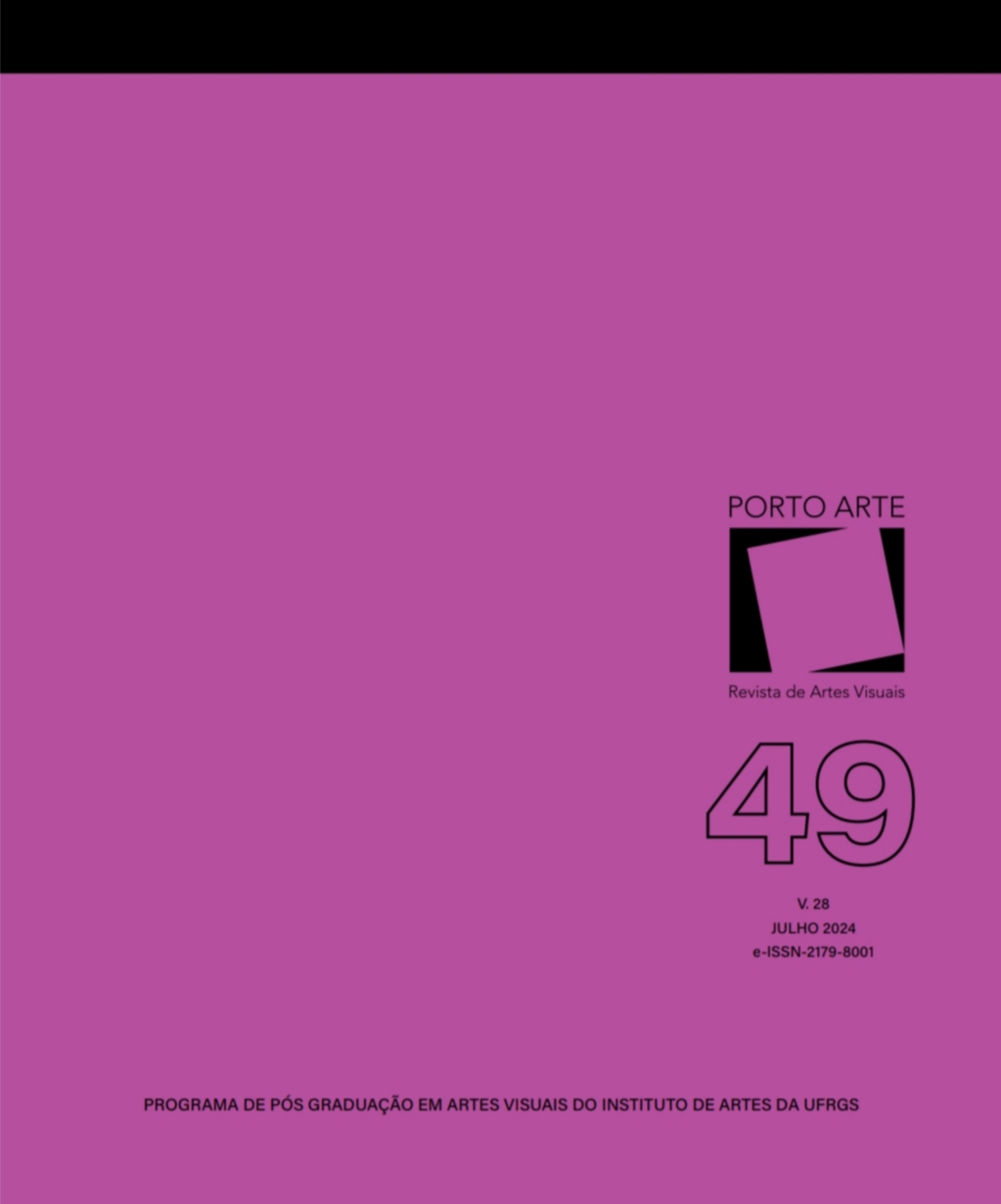Reactionary Drift of the Discourses about the Digital
DOI:
https://doi.org/10.22456/2179-8001.141697Keywords:
Digital Photography, Post-photography, Index, Contemporary ArtAbstract
This article investigates the recent discourses about digital photography, regarding their technical and conceptual implications. By means of retrieving the idea of index proposed by Charles Sanders Pierce and Rosalind Krauss and considering the current uses of photography, we critically analyze the arguments of authors who advocate that the digital image represents a complete rupture with the chemical system. Such discourses, as the one presented by Joan Fontcuberta in Pandora’s Camera: Photography After Photography, fail to consider photography’s contribution to the art field and reinforce pre-modern conceptions about the artistic practice.
Downloads
References
BAUDRILLARD, Jean. “Il digitale e l’egemonico”. In: Internazionale, Roma, n. 674, 2007.
BOURDIEU, Pierre. La fotografia: usi e funzioni sociali di un’arte media. Rimini: Guaraldi, 1972.
CALVINO, Italo.“L’avventura di un fotografo”. In: _____. Romanzi e racconti vol. II. Torino: Einaudi, 1992.
ECO, Umberto. Trattato di semiotica generale. Milano: Bompiani, 1975.
FONTCUBERTA, Joan. La (foto)camera di Pandora. La fotografi@ dopo la fotografia. Roma: Contrasto, 2012.
FOSTER, Hal et al. Arte dal 1900. Bologna: Zanichelli, 2006.
KUNDERA, Milan. L’immortalità. Milano: Adelphi, 1990.
MARRA, Claudio. L’immagine infedele: la falsa rivoluzione della fotografia digitale. Milano: Bruno Mondadori, 2006.
McLUHAN, Marshall. Gli strumenti del comunicare. Milano: Il Saggiatore, 1975.
RITCHIN, Fred. Dopo la fotografia. Torino: Einaudi, 2012.
Additional Files
Published
How to Cite
Issue
Section
Categories
License
Copyright (c) 2024 Claudio Marra; Camila Monteiro Schenkel

This work is licensed under a Creative Commons Attribution-NonCommercial-ShareAlike 4.0 International License.
Autores que publicam nesta revista concordam com os seguintes termos:
Autores mantêm os direitos autorais e concedem à revista o direito de primeira publicação, com o trabalho licenciado sob a Creative Commons Atribuição-NãoComercial-CompartilhaIgual 4.0 Internacional (CC BY-NC-SA 4.0).
Autores têm autorização para assumir contratos adicionais separadamente, para distribuição não exclusiva da versão do trabalho publicada nesta revista, como publicar em repositório institucional, com reconhecimento de autoria e publicação inicial nesta revista, quando for o caso.
Os artigos são de acesso aberto e uso gratuito, com atribuições próprias em atividades educacionais, de pesquisa e não comerciais.


